ISOCHAIN Plus the Weights? The Best of Both Worlds!
by Paul “Coach” Wade
Seriously—do you really expect this
to replace regular training?
Since information about the
ISOCHAIN was released to the public last month, this question has come up over and over. The answer is yes.
...And no.
Yes, the ISOCHAIN is a viable form of resistance training. Isometric work will make you stronger. It will make you bigger, too, if that’s how you use it. So many studies have proven this now, nobody who knows what they’re talking about will dispute it. Motor units follow the
All-or None Law. They either contract or they don’t. There is nothing magical about picking weights up and putting them down again, and there never has been. If you want to get bigger and stronger, you don’t need to do it. (Cue the shock, outrage, fainting, explosive diarrhea, etc.)
What about the "no"?
Well, picking up weights and putting them down again will make you bigger and stronger, too. It always has. If you want to specifically get better at hoisting weights up and down, you should practice it. Additionally, some of you are passionate about the iron. The gym. You love it. It’s part of your life history, your lifestyle. You can’t picture being without it.
Life isn’t binary, and your training shouldn’t be, either. It’s
not a question of the ISOCHAIN vs conventional methods.
You can use both. The more tools you have in your toolbox, the faster you can reach your training goals. The ISOCHAIN is a very, very versatile and powerful tool.
In this article, I’m gonna show you ten ways you can mix-and-match conventional in-gym workouts with ISOCHAIN isometrics to send your strength through the roof.
You asked for the best of both worlds? You got it, baby!
1. Alternate the gym with ISOCHAIN sessions
Isometrics is the most powerful method that exists for increasing absolute strength (if anyone doubts that, they don’t understand what absolute strength is). Studies have shown increases in strength of 5% per week during isometrics programs (Barnham, 1960). You can double your strength in twenty weeks with isometrics, performed correctly.
Isometric strength increases DO translate into dynamic strength increases (Lum & Barbosa, 2018). Even if you are only truly passionate about hoisting the iron, you’d be crazy not to utilize scientific isometrics to increase your overall strength in the gym—elite powerlifters and weightlifters do just that.
A great way to do this is to perform an ISOCHAIN session at home, on non-training days. Let’s say you lift on Monday, Tuesday, Thursday and Saturday—an excellent approach to isometrics would be to perform an ISOCHAIN workout on Wednesday and Sunday. If you lift three times per week, perform an ISOCHAIN session on three non-gym days.
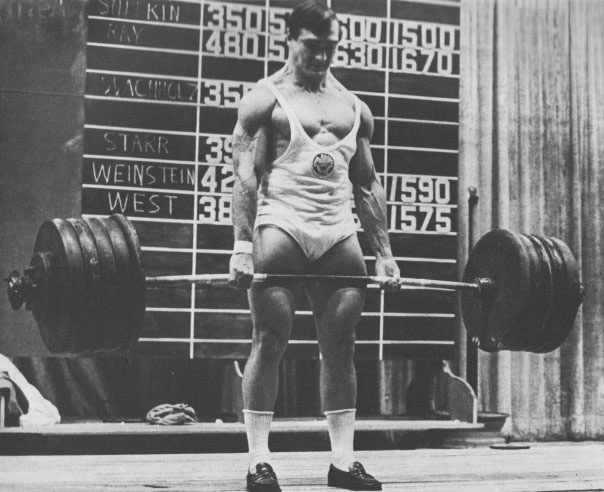
The legendary coach Bill Starr was a lifelong champion of isometrics.
Sure didn’t hurt his regular lifting.
ISOCHAIN training is convenient, brief, and doesn’t cut into your recovery reserves dramatically, if done right. Most importantly, it amplifies total-body strength very rapidly.
Why would any athlete not want these benefits?
2. The ISOCHAIN as a warm-up tool: instant 20% strength increase
Got no interest in static training? You all about moving that bar/cable/kettlebell? Yeah, buddy!
Hold up though, kid. What if I could offer you a sweet little hack to get
better at lifting your weights of choice? What if a few seconds investment in isometrics could make you a MASSIVE
twenty percent stronger in your lifts? Got your attention now, big boy? Good, because I’ve got a real beauty for you, here.
Mel Siff’s legendary manual
Supertraining revealed to the world that isometric holds prior to dynamic lifting will make you more powerful in those lifts by up to
one-fifth. This is true, even for advanced lifters; it’s called the "immediate after-effect" of isometric work, and is a result of amplified neurological facilitation. Simply use the ISOCHAIN as part of your body-part/technical warm up, and
boom—months’ worth of strength gains, in seconds.
A Suggested Isometric Neurological Protocol.
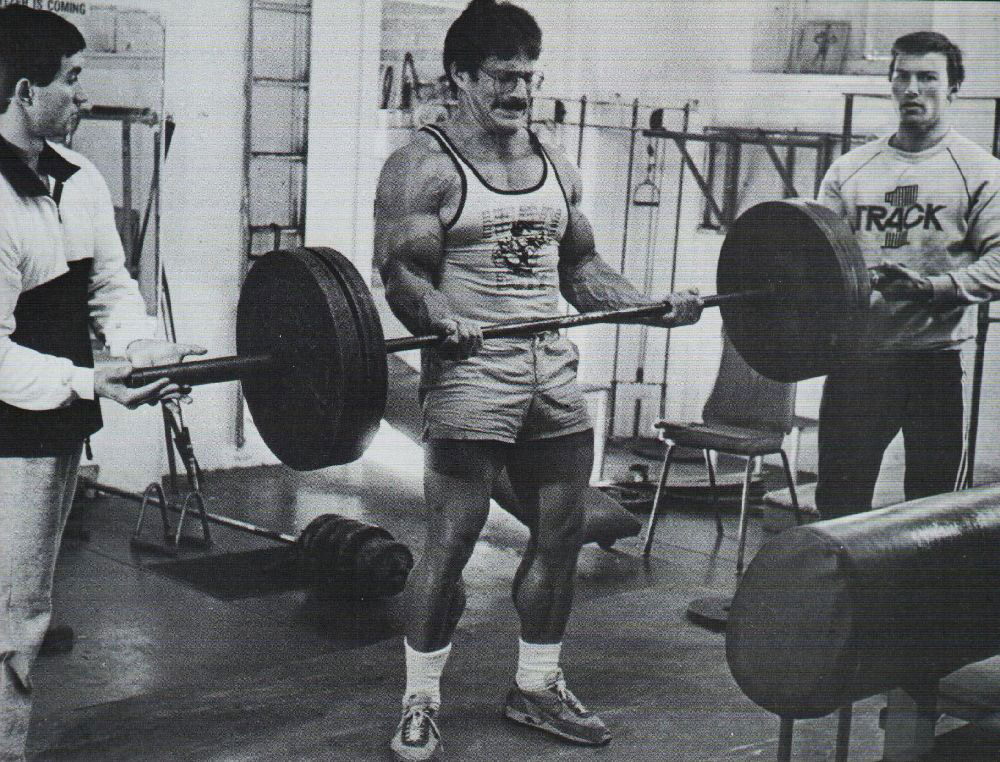 The late, great Mike Mentzer was another outspoken advocate of static strength techniques.
The late, great Mike Mentzer was another outspoken advocate of static strength techniques.
3. ISOCHAIN methods as a specialization tactic
Been using conventional workouts in the gym for a while? One area (or more) just never seeming to make the gains you wanna see? Like the man Steve Tyler said: if you do what you’ve always done, you’ll always get what you always got.
Isometric sessions with an ISOCHAIN involve higher forces, superior neurological recruitment, and greater levels of time-under-tension than conventional weight-training. In addition, an ISOCHAIN allows athletes to record, track and forcibly impel their progress forward scientifically, with a high degree of accuracy. These are pretty kick-ass conditions for anyone wanting to improve on a lagging body-part in a compressed timeframe.
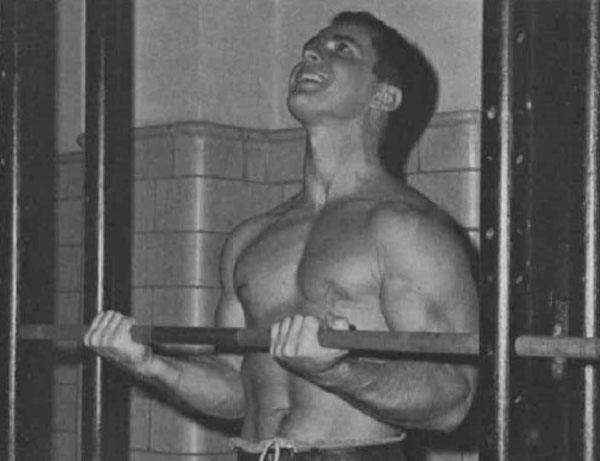 Isometric biceps training, circa 1964.
Isometric biceps training, circa 1964.
Pick a muscle or area you need to improve, and work that area (and only that area) twice per week with the ISOCHAIN, on days off from the gym. Select two isometric drills for the selected muscle group. Use six reps of 6-seconds, increasing your target force level by 5% every time you can perform all six full holds with that weight. Finish each drill with two 30-second holds, measuring your average force and increasing it whenever you can.
The Ultimate Isometrics Manual includes multiple useful ISOCHAIN drills for any given body-part; biceps, deltoids, glutes, forearms, lats, etc.
I don’t care how "genetically inferior" a muscle is, if you punish it like this for just a month or two, it’ll explode into new size and strength. It won’t have a choice.
4. ISOCHAIN training as a periodization mesocycle
This suits athletes or coaches who don’t wish to mix-and-match isometric and conventional lifting methods; you just do one or the other, not both together.
Periodization involves setting aside different "mesocycles" of the training year to commit fully to specific training goals, such as power, speed, or hypertrophy. One approach, popular with the Soviets, was to commit one block to building elite-level isometric strength.
Train hard using
only isometrics for 4-8 weeks. If you have not performed isometrics for several months, you will gain strength
extremely rapidly. Just as diminishing returns set in, instead of varying your isometrics routine to make further gains, simply quit and move to the next block of the periodization plan—i.e., go back to the regular weights. After six months or a year, return to the isometrics fresh and repeat, to keep karate kicking your strength up to higher and higher levels. This is the approach suggested by the mighty Pavel Tsatsouline.
Pavel on isometrics.
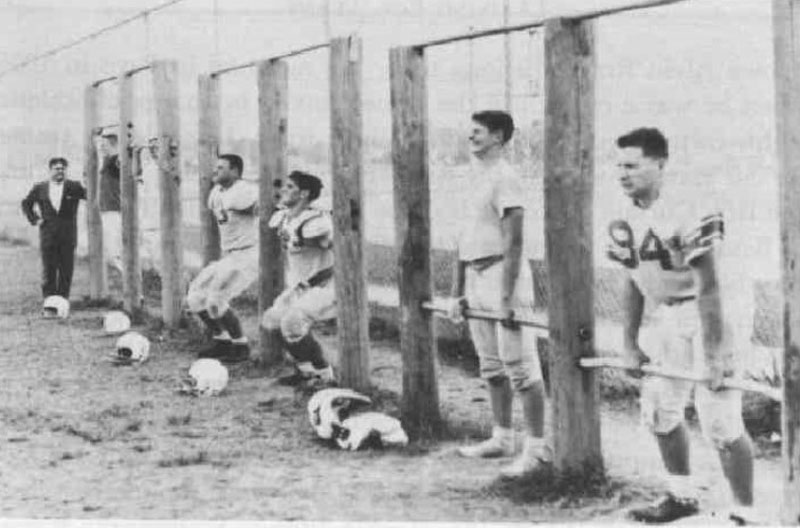 Some brutal old-school isometric training for football strength.
Some brutal old-school isometric training for football strength.
Isos get you stronger, fast—note the bent bar (closest).
5. ISOCHAIN training as a solution for busted-up tough guys
Sadly, some athletes find themselves giving up on conventional weights due to the pain. While we were assessing the third prototype of the ISOCHAIN, I was introduced to a guy who had given up lifting five or six years back, due to osteoarthritis of the knees. Decades back, in his early twenties, this dude—let’s call him "Stu"—busted up his knees playing football, the right apparently much worse that the left. Over the years he had one ACL replacement and multiple meniscus tidy-ups. These ultimately left his knees with less cartilage than ever, and by his late forties he was plagued by such intense knee pain he resorted to Tylenol daily just to get around.
Stu also loved training with weights—he was a real garage gorilla—but found he could do less and less because his knees hurt so bad after training, sometimes for days. First squats went, then deadlifts; then he quit rows and standing exercises. By that time, he figured "if I can’t do the basics, why bother?" and hit the gym less and less regularly until he finally quit altogether, around three years back.
At the time I met Stu he was in his early fifties. When we assessed him on an ISOCHAIN, we performed all his beloved basics: squats, stiff-legged deadlifts, rows, and so on. Stu had some knee pain after the first few sessions, but once the break-in period subsided, he discovered something amazing; not only could he perform isometric squats and deadlifts without the crunching, grinding and pain, but he could actually use more weight than he did in his prime.
Plus, once he got over that initial scar-tissue conditioning phase, his knees not only didn’t hurt after training—they pretty much didn’t hurt at all. They felt "amazing". Researchers are only now beginning to uncover the remarkable power of isometrics to actively and dramatically reduce joint pain—the opposite effect regular training generally has (Rio, 2015).
The most important thing from the research? Tendons seem to love heavy isometric load and it reduced tendon pain immediately.
-Dr Ebonie Rio
Stu is now back actively training in his garage, Monday, Wednesday and Friday. He lifts dumbbells, barbells and kettlebells—heavy!—for his upper-body on these days. On Tuesday, Thursday and Saturday, he does max iso deadlifts, squats and calf raises at home on a prototype ISOCHAIN. He says he’s never felt better, and I gotta admit, the kid’s looking brutally strong.
He has also quit the Tylenol—if his knees ache, he trains them!
6. The ISOCHAIN as a perfect travel gym
This one’s a no-brainer.
Isometrics—along with bodyweight!—has always been the go-to choice for athletes on a vacation or a work trip, to retain and improve their strength and conditioning levels. This is one of the traditional reasons isometrics were praised by pragmatic coaches.
An ISOCHAIN weighs only a few pounds and will easily fit into the trunk of any car. With it, an athlete can get an elite-level resistance training program in—squats, presses, rows, curls, deadlifts, and all the most productive exercises with up to a thousand pounds of resistance. An ISOCHAIN workout is quick, refreshing (rather than exhausting), scientifically measurable, and won’t interfere with your trip.
The perfect solution.
7. Using the ISOCHAIN to dominate "sticking points"
A very specialist means of using isometrics is as a method to overcome the "sticking point" in a dynamic lift (often the deadlift, squat or press, but any lift, really). This approach has been used in virtually all strength sports.
The most direct manner of addressing a sticking point is by employing partial repetitions or isometric training.
-Kompf and Arandjelović: Understanding and Overcoming the Sticking Point in Resistance Exercise (2016)
Every lift has a sticking point—a particular angle, usually pretty small, where the bar speed slows, and which determines whether the lift will be made or failed. It stands to reason that all serious lifters want to improve their sticking points on lifts, because sticking points are the weakest link in the movement. You get stronger in a sticking point, you get stronger in that lift.
Muscles typically gain strength through their entire range. But the Law of Specificity applies: if you want to get good at something, do it often. if you are stalling at a specific part of a lift, repeatedly working that limited range-of-motion will increase your lifting skills in that range. In addition, isometric work:
...offers a greater potential than dynamic exercises for visual and kinesthetic cues to hold any given position. This gives isometrics a distinct advantage for studying and correcting errors.
-Verkhoshansky
It will also provide an invincible psychological boost: if your regular deadlift keeps stalling at 405lbs, and you get strong enough to isometrically smash the sticking point with 450lbs, you’ll be more confident next time you attempt a dynamic max. How could you not be?
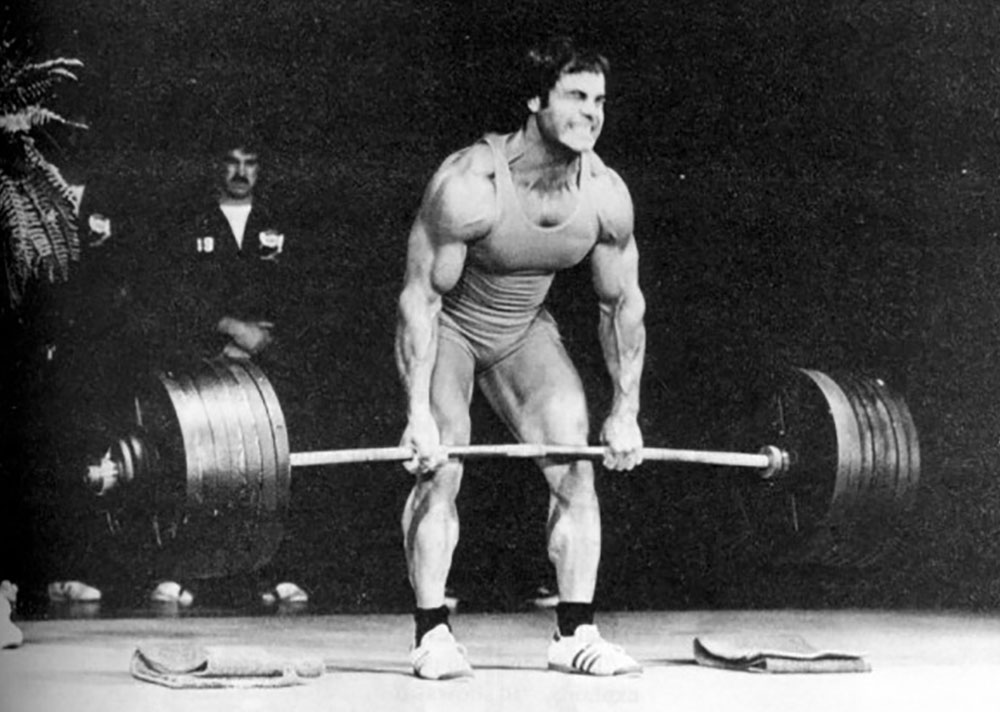
You can do this training in the gym or at home. Warm up well, and set the ISOCHAIN bar close to the sticking point of the lift you are working to improve. Build up to 10 single max reps of 5 seconds, pulling/pushing against the bar as hard as possible. Bingo—a few weeks of this, and the portion of the lift which was once a struggle now seems like a cake walk.
(Another useful trick, straight from the Soviet researchers: a lift will keep moving for a few degrees even after the muscles begin to fail—so when applying this methodology, pick a bar location slightly below your apparent sticking point.)
8. Use the ISOCHAIN to avoid deconditioning during longer layoffs
Many athletes find themselves training hard part of the year, and then laying-off for various reasons—losing their gains and becoming frustrated. Some of this may be due to work and family commitments; some may well be seasonal. If you can’t face trudging into the garage to pump iron in Winter because of the snow and ice, or if you can’t find the time to get to the gym in the Summer because the beach is calling, you can depend on the trusty ISOCHAIN to get you through these periods.
ISOCHAIN training sessions are convenient and fast, and you can keep (and even build on) your hard-earned strength and muscle gains, ready for the glorious day you hit that gym again.
9. ISOCHAIN as rehab technology
Isometrics and rehabilitation go hand-in-hand, and they always have. There are three major reasons for this. Firstly, isometrics is autoregulated; your own body determines the force levels required, not the demands of an external load. Secondly, the joints—often the source of pain—remain static and protected. Thirdly, there is zero momentum or extension during isometric drills, the usual causes of re-injury.
A primary advantage of isometric exercise in musculoskeletal rehabilitation lies in the opportunity for localized muscle exercise without moving joints. Strength increases more rapidly in isometric than in dynamic exercises.
-Kuprian: Physical therapy for Sports
If you are coming back from an injury/injuries, need some prehab work, or just want to be careful getting back into it when you’re out-of-shape, the ISOCHAIN is the safest, most productive, most logical technology to use. Many physiotherapists and rehab clinics use equipment strikingly similar to an ISOCHAIN for assessment. These people know what they’re doing.
10. ISOCHAIN training for amplified endurance
Isometrics are used in sport to enhance static muscular endurance, for example in long-distance speed skating, where the demand for maintaining a bent-trunk posture is extremely high.
-Zatsiorsky (2016)
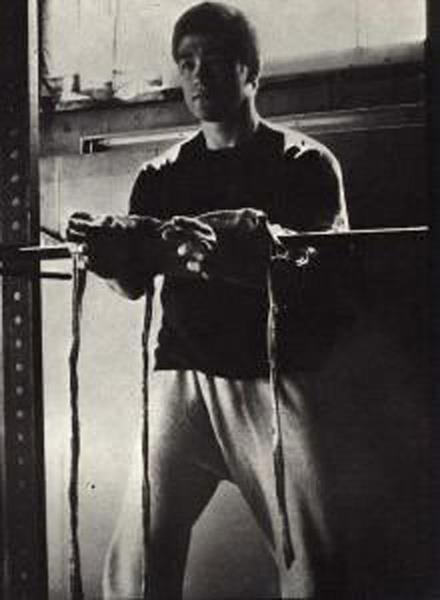
So far, I’ve presupposed that everyone who trains with an ISOCHAIN wants to build strength and muscle. Not all athletes will, however. Sports ranging from martial arts, boxing, climbing to cycling all demand high levels of muscular
endurance. Isometric holds are obviously ideal for sports or disciplines involving static postures or body-parts, however recent studies have found that isometrics increase endurance just as well as traditional, dynamic methods (Myers, et. Al., 2015).
One mix-and-match option is to go to the gym and perform your regular workouts, but spare 2-3 sessions per week for the ISOCHAIN, to build muscular endurance. You can employ an ISOCHAIN to build endurance by setting a hold time in basic drills (100 seconds is a great start for muscular endurance) and using the console functions to measure your average work capacity. Increasing muscular stamina over time is easy, accurate and scientific. Zero guesswork.
Oh, and another benefit of longer isometric holds—they make your muscles feel denser, and "super efficient". Just ask Bruce Lee or Steve Justa.
****
Well—there ya go. Just like Old Uncle Paul promised, ten sparkly ways to combine the ISOCHAIN with regular gym work, to increase strength, muscle and endurance. I could’ve written a dozen more—that’s how versatile this kit is. The ISOCHAIN is pretty life-changing—and if I didn’t mean that, I wouldn’t say it. It WILL help you reach your full potential quicker than you ever could without it, and it’ll do that without screwing up your joints, too...which means a lot when the training years are racking up.
Plus—it’s fun as hell to use! There’s nothing that pumps you up quite as much as rocking a drill you did just a few days ago, and seeing your numbers shoot up. And shoot up they do. The motivation to come back and go again next time is incredibly intense—almost addictive. (In a good way fam, not a Jim Belushi way.) You want the ideal gift for yourself or a strength-loving friend? Here it is.
Got any feedback? Questions? Hit me up below. I’d love to hear from ya!
Back